June 27 start for Uber/Lyft in place of Bloomington bus night runs, Aug. 15 start for new fixed routes
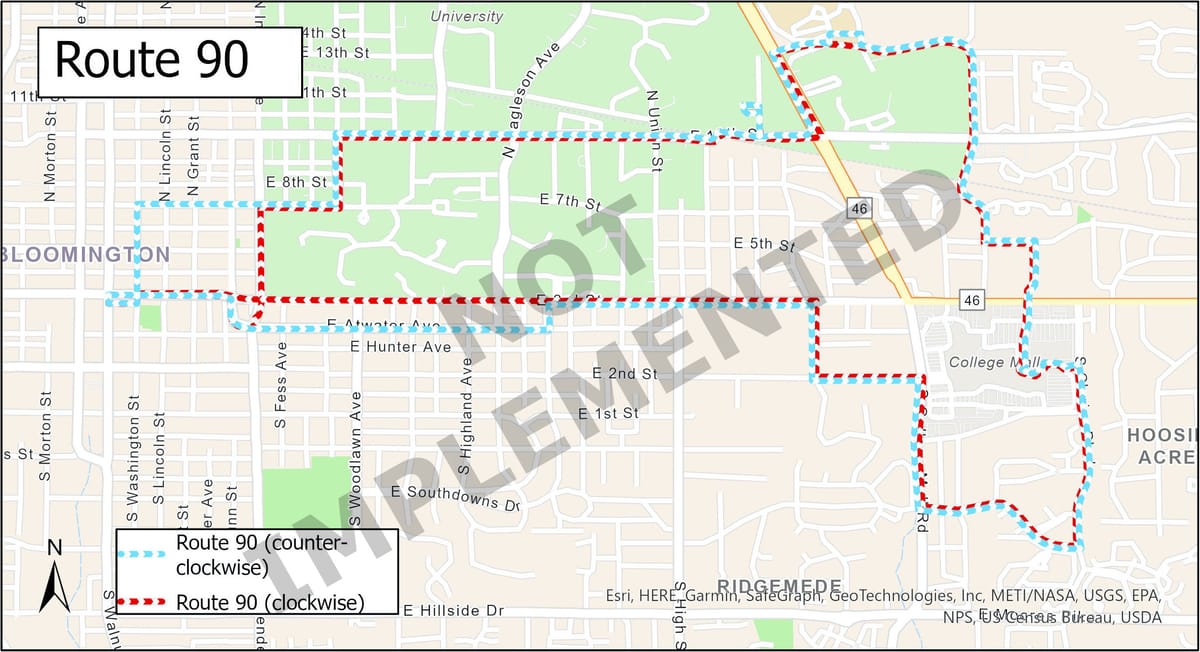
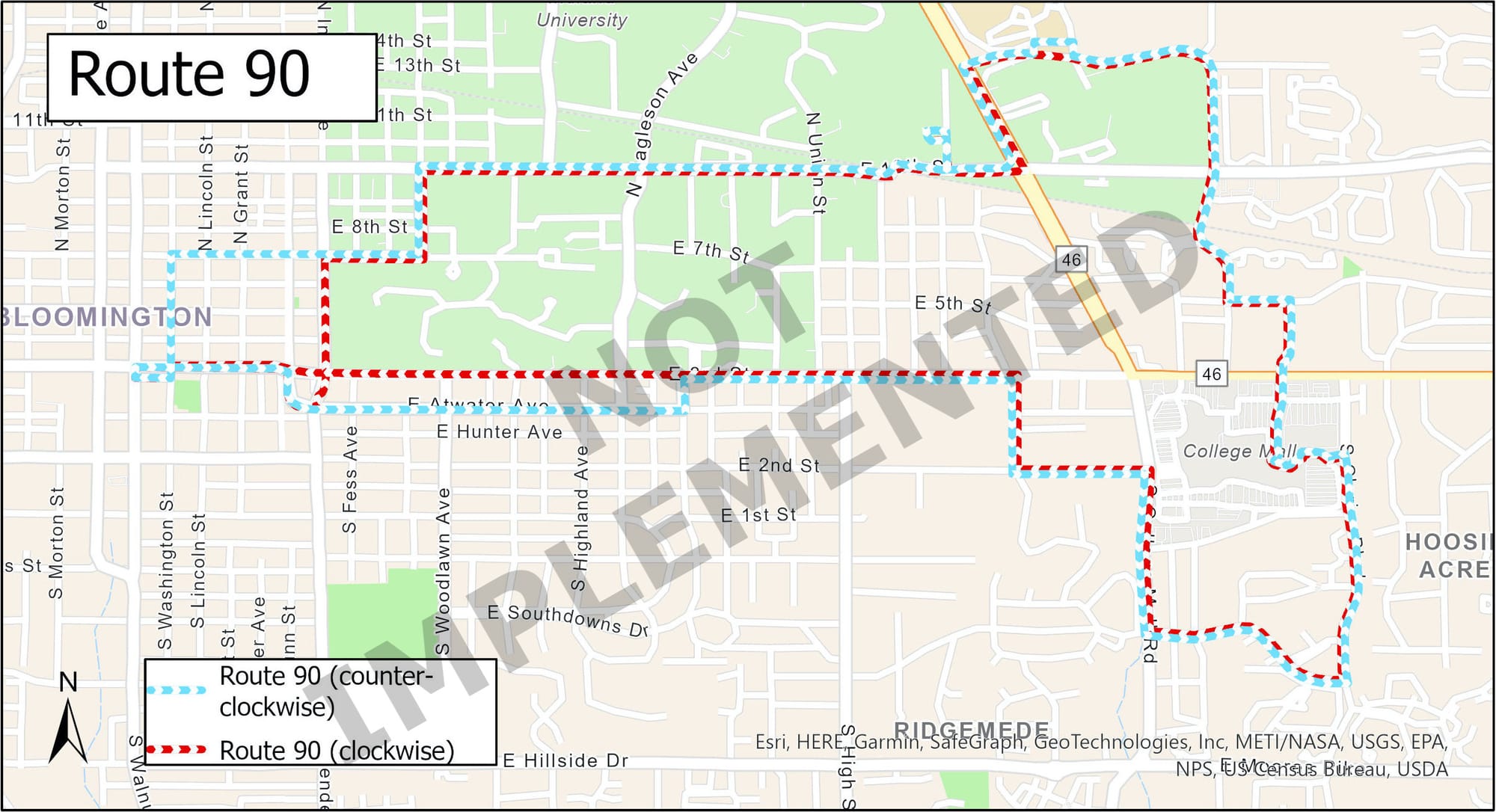
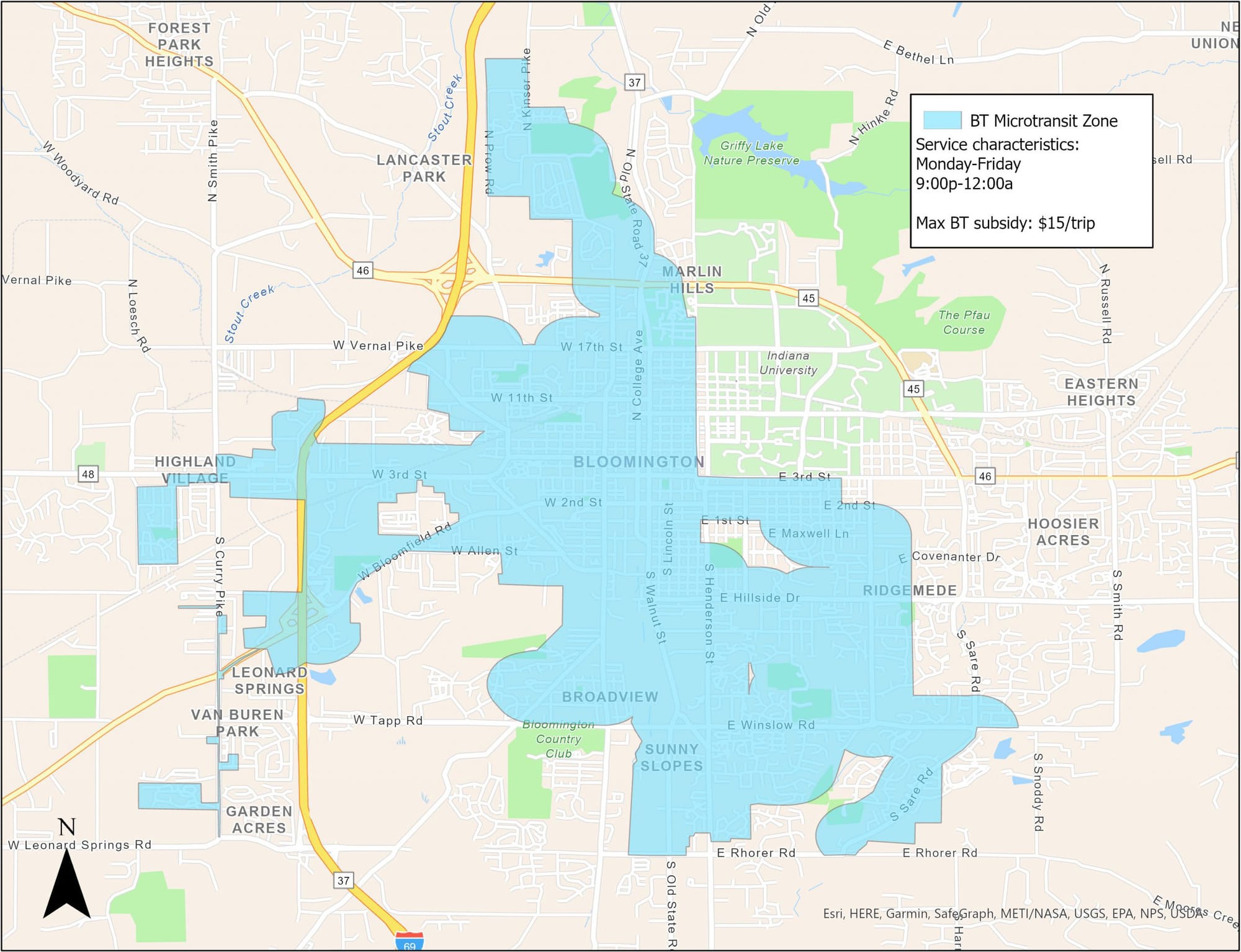
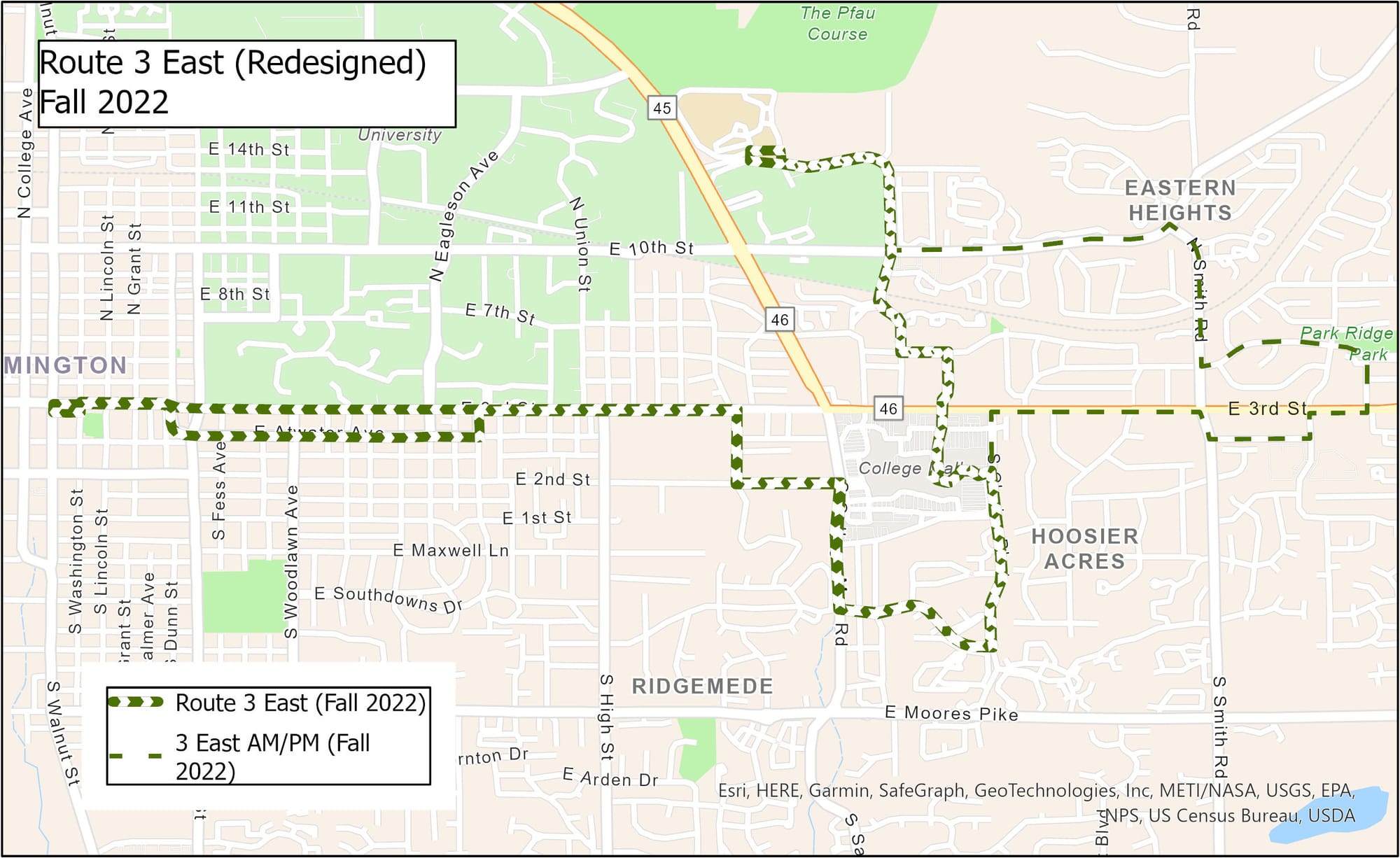
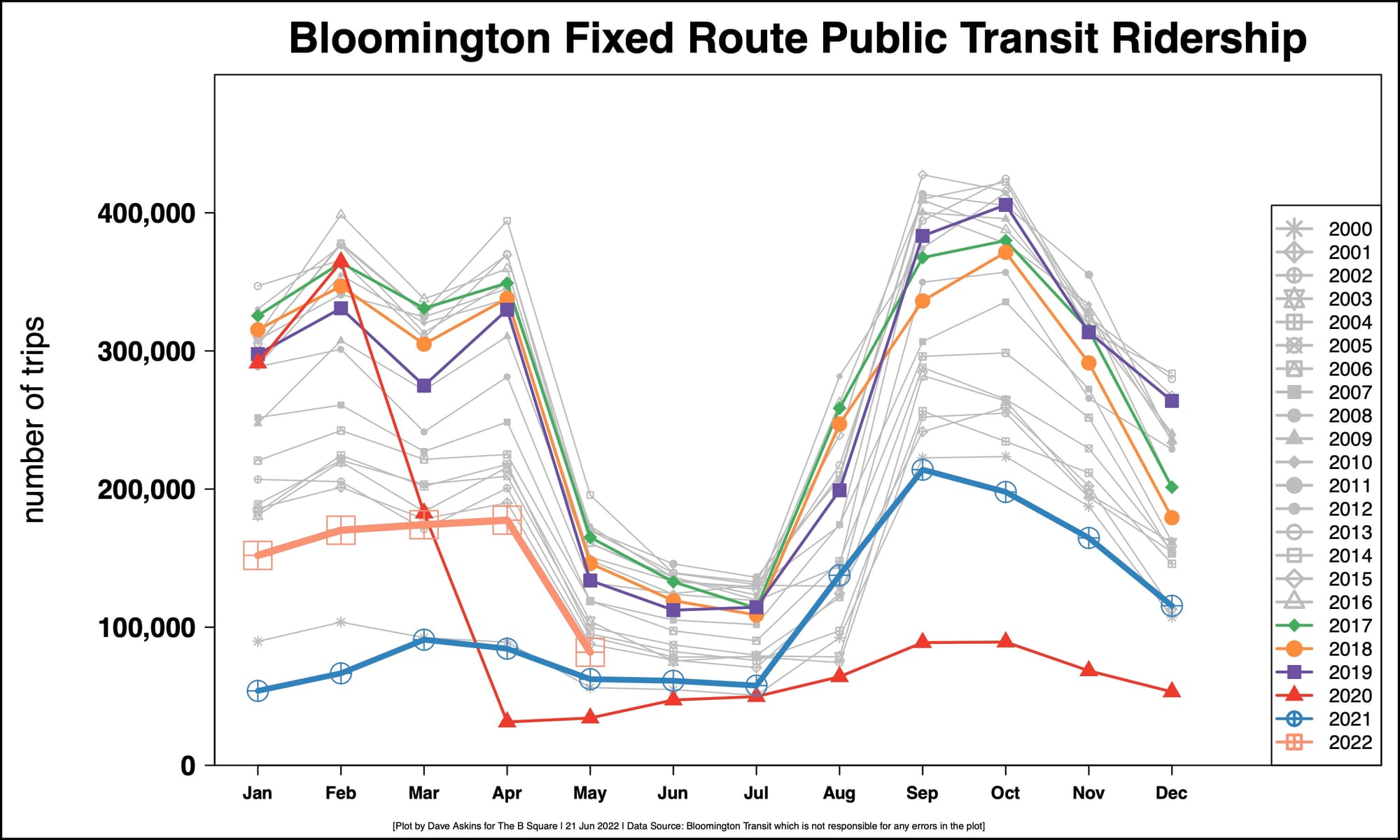
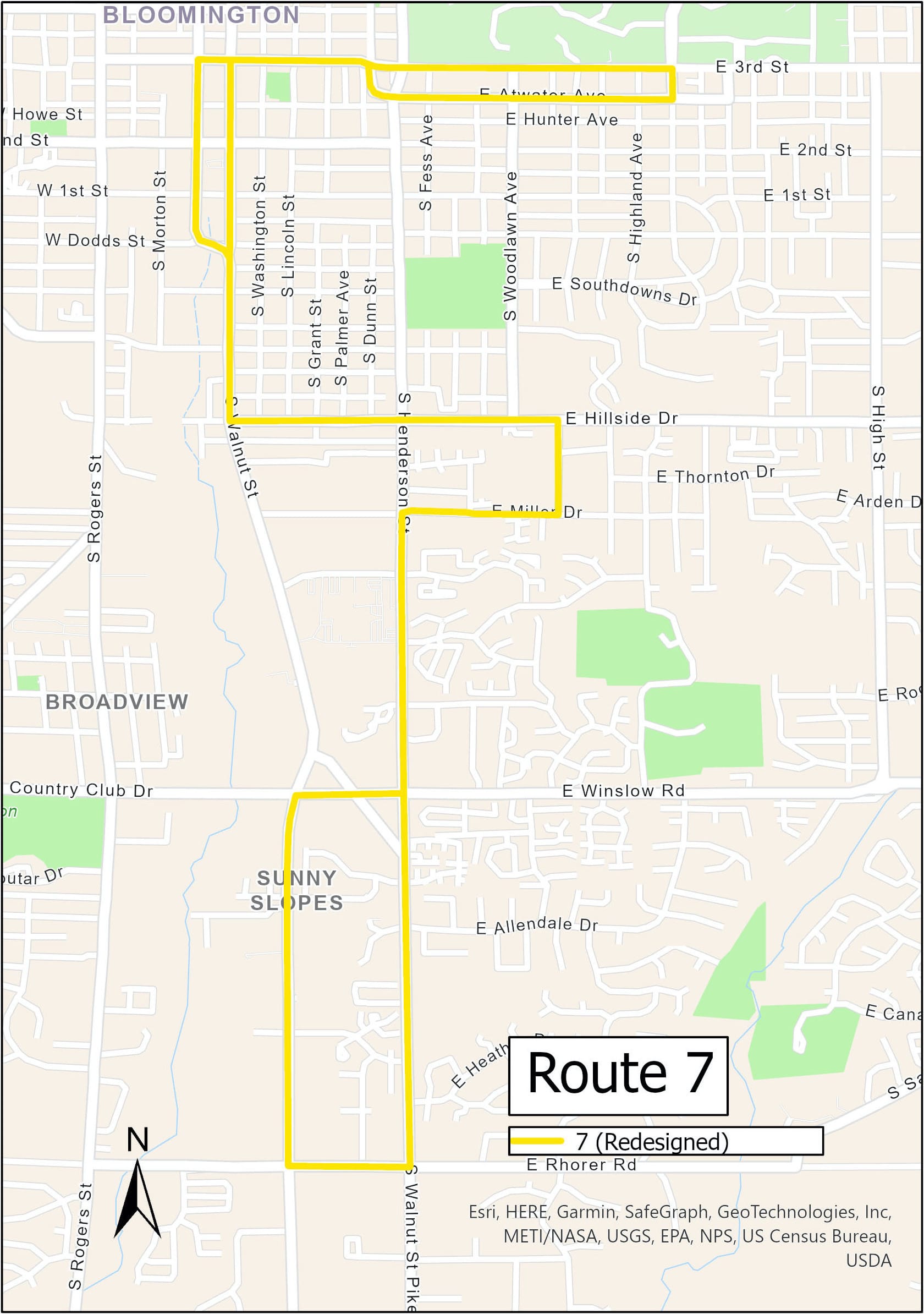
Bloomington Transit’s (BT’s) new optimized bus routes will finally debut on Aug. 15 this year.
That’s the result of BT board action at its regular monthly meeting on Tuesday.
The routes were supposed to roll out two years ago, in fall 2020, but that launch date was delayed until this year, due to the COVID-19 pandemic. Some of the new routes to be implemented later this fall will be a lot different from those recommended by BT’s consultant three years ago.
Also getting a mention at Tuesday’s board meeting was the June 27 launch of subsidized rides on Uber or Lyft as a replacement for night service (9 p.m. to midnight) on several BT fixed routes. The board had previously approved the service change. The only question had been the start date.
Under terms of the late-night service, which is branded as “BT Late Night,” passengers pay the usual $1 fare, with the difference, up to $19, paid by BT. Rides have to start and end inside a prescribed area of the city, which does not include chunks of the Indiana University campus, because fixed route bus service will continue for those parts of town.
The Uber/Lyft subsidized service for late evening hours was originally supposed to start on May 9, right after Indiana University’s spring semester ended. But details related to the technology platform took longer than expected to iron out.
At its Tuesday meeting, BT’s five-member board touched on several other familiar topics.
Also a point of discussion at Tuesday’s BT’s board meet was the cost of fuel. The 2022 budget for BT anticipated an average price per gallon of $2.75. Since February, BT has paid more than that.
In May BT paid $4.30, or about 50 percent more. The latest fuel load cost $5.03 per gallon. Last year, BT used about 220,000 gallons of diesel, which was down from around 270,000 gallons in pre-pandemic years.
BT controller Christa Browning told the board at Tuesday’s meeting that she is projecting an overspend by about $175,000 in the fuel line item for this year’s budget. She thinks there’s enough to cover the amount in other line items, but she will be keeping it under a close watch, Browning told the board.
BT’s ridership numbers continue to reflect the normal seasonal pattern of university life—around 70 percent of BT’s riders are affiliated with Indiana University. May’s numbers are typically less than half of April’s, and on that score this year was no different. But May’s numbers this year (81,871) are about 60 percent of what they were in 2019, the last full pre-pandemic year. But that is 31 percent better than last year.
Impact of driver shortage on new fixed routes, Uber/Lyft subsidy
The new optimized routes, which were recommended three years ago by BT consultant Foursquare ITP, included a new Route 90, which would have formed a big, bidirectional loop serving the east side of town with 20-minute frequency. At the time BT staff tweaked that frequency to every 15 minutes, based on public feedback.
But in the meantime, which included the COVID-19 pandemic, BT has seen its driver workforce shrink. In fact, the driver shortage is the biggest factor pushing BT to swap late-night, regular bus service for subsidized Uber/Lyft service. BT is currently short 12 drivers even after hiring two in May.
Based on the driver shortage, the BT staff’s proposal earlier this spring was to reduce the Route 90 frequency to the consultant’s original recommendation—which was every 20 minutes. BT again heard pushback about the lower frequency.
About the Route 90, in his memo to the board, BT general manager John Connell wrote that “The success of the Route 90 hinged on the increased frequency of service.” The reduced frequency to every 20 minutes was met with “general disfavor of both riders and staff,” Connell wrote. So the bidirectional Route 90 won’t be implemented as a part of the new configuration of routes, which will start Aug. 15.
The Uber/Lyft ride subsidy, which starts next Monday (June 27) is being promoted directly to current riders of the fixed routes that will stop running earlier, according to planning and special projects manager Zac Hunec. An intern is handing out flyers to riders at bus stops and talking to riders about the upcoming Uber/Lyft option, Hunec told the board at Tuesday’s meeting.
The BT Late Night system will work on the standard Uber/Lyft smartphone apps, but passengers use a special promotional code to get their contribution to the fare discounted to $1. That promotional code has not yet been released.
Those who don’t have a smartphone, or who use a wheelchair to get around can call BT at 812-336-7433 to set up an on-demand ride.




Comments ()